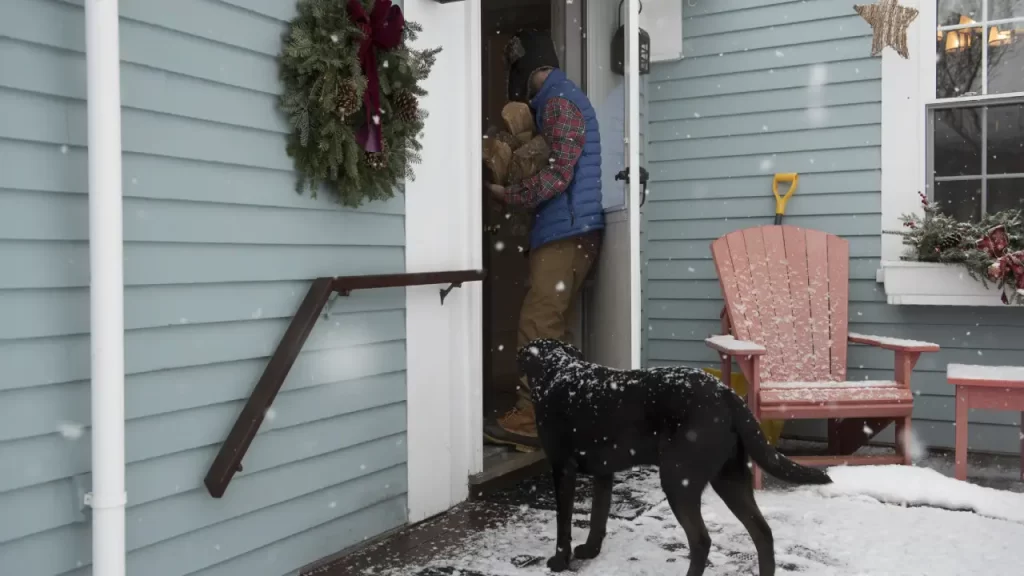Whether you’re a snow bunny or not, cold weather is on its way. Before you bring out the puffy jackets and ski gloves, it’s time to think about how prepared your home is for winter. Snow, ice, and freezing temperatures are tough conditions for everyone, and your home bears the brunt of them. After all, it’s your home’s roof and walls that are keeping those harsh elements away from you and your family.
Not sure what you need to do to ensure your home is ready for winter? This article has got you covered. Below you’ll find five tips to prep your home for the icy days ahead.
1. Have Your Roof Inspected
If you live in a standalone home, consider having a contractor come look at your roof. They can check for any current damage, such as loose or damaged shingles. Doing this before the first snowfall can ease many of your worries. Moreover, a contractor can also tell whether your roof is in good shape overall and if or when it will need to be replaced.
If a new roof or even repairs are needed, it’s important to think how you’re going to pay for it. This may be a costly expense that you weren’t anticipating. If your cash flow allows, aim to put the bill on your debit card. You don’t want to add financial insult to your roof’s injury by racking up interest charges on a significant debt.
2. Ensure Your Home Is Well Insulated
Now that your roof is in tip-top shape, you will want to make sure the rest of your home is well insulated. This means checking for any potential air pockets around windows or doors. While these may seem minor, such openings can significantly increase your overall heating costs. Last year, the average cost for heating a home was $724 for gas and $1,359 for electricity. Anything you can do to proactively lower the cost will be to your advantage.
Go around each of your windows with a lit candle and see whether the smoke drifts. If it does, it’s a sure sign there is a small leak. Most of these can be fixed with simple caulking, but you may also want to invest in draft stoppers. These protective barriers can keep your home cozy and your wallet happy, too.
3. Check Your Home’s Drainage System
Even if you don’t live in a climate with lots of snow, the wintertime can bring on some horrific, freezing rain storms. Check your home’s drainage system to ensure that water is moving away from your home. You never want water to pool around your home’s exterior, as this can cause mold, mildew, and leaks. This can be particularly problematic in the colder months, as this water can freeze and expand, leading to further damage.
Inspect your gutters to make sure they are free and clear of all debris. Remove any and all leaves, and be on the lookout for any cracks. Even the smallest holes can cause leakage. In good weather, check whether there is any water damage present directly underneath the gutters. This can be a sign of any leakage as well.
4. Test Smoke Detectors
Did you know that home fires occur more often in winter than at any other time of the year? This is the season where space heaters are on full blast and fireplaces blaze. That’s not to mention the 100-plus Christmas trees that go up in flames each year! Go around the house and test all smoke detectors to ensure they are working properly and don’t need new batteries.
Along with smoke detectors, you should also test your carbon monoxide detector. Any appliance that is fuel-burning, such as gas ranges, clothes dryers, water heaters, and space heaters, has the potential to cause carbon monoxide poisoning. This most often happens if the appliance isn’t sufficiently vented or is poorly maintained. If your home doesn’t have a carbon monoxide detector, get one. They aren’t too difficult to install yourself, and there are plenty of high-tech options available on the market today.
5. Be Prepared for Winter’s Worst
Lastly, make sure you have everything you need in case a massive snowstorm hits. Being snowed in is never fun, and you can never really predict how massive a snowstorm will be. A decent shovel should do the trick for your sidewalk or front steps. However, you’ll save your back — and perhaps avert a heart attack — by getting a snowblower to clear a long driveway.
In case you lose power, you’ll need to have access to flashlights, extra batteries, and clean water. You may also want to buy a generator, especially if you experience frequent power outages. If this isn’t feasible, you can use your computer’s uninterruptible power supply to at least keep your phone charged. Having extra canned goods in the pantry is always a good idea in case you aren’t able to make it to a grocery store.
Takeaways
Keeping your home safe during the winter months will take a bit of prep on your end. However, knowing that you and your family are safe is well worth the effort it will take. A few weeks before the first signs of winter appear, go through this checklist. Spend a day checking the interior and exterior of your home. And if you need outside help, find a contractor who can get the job done before temperatures start to drop in earnest.

